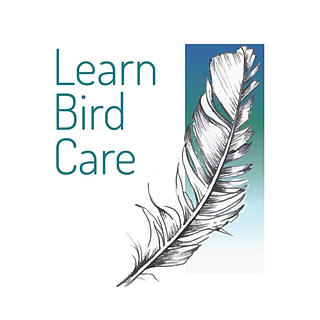Photographic conduct around wild birds in rehabilitation
- Learn Bird Care
- Jun 28, 2019
- 3 min read
Updated: Jul 18, 2019

This is a topic that is close to my heart as I so often see inappropriate videos and photographs of wildlife placed under unnecessary stress because someone wants to display their knowledge and experience. Please don’t get me wrong, it’s wonderful when an individual has an opportunity to display what it is they do and how they do it. Moments like this should not to be missed BUT this ‘moment’ should be the time to use that platform to correctly educate people, not a platform to show off.

When working with wildlife one should always, and I really mean always, have the animals’ best interests in the forefront of your mind.
When birds come into care they are not there at their choosing, they are there because they’re unwell. They have been subjected to physical stressors of injury or illness, capture, transport and this is compounded by coming into an environment that is alien to them. This is obviously made worse every time they are handled during cleaning, medicating, feeding and being examined. In their eye’s we are a predator! Yes, despite our best intentions we are seen as a predator by most wildlife and under all this stress we expect them to heal and recover! As a rehabilitator I didn’t always get it right, and I am probably my own biggest critic, but I always made it my mission to keep learning and understand how to do things correctly.

When it comes to photographing or videoing, always explain the “why” of what you are doing – then you will be educating those who don’t understand, and hopefully avoid misunderstanding and inappropriate footage.

These are some tips to keep in mind when demonstrating something for the camera:
No flash
Keep noise to a minimum
Do not pet, stroke, cuddle, talk to or hand-feed a wild bird in photos or videos
Explain to any assistants what the plan of action is going to be and what they need to do prior to fetching the bird
Handle the bird with the correct PPE i.e. wear protective eye gear if handling a bird such as heron
If capturing wildlife use the correct equipment i.e. a net or towel
Take the photo or video at the same time as necessary activities i.e. feeding or transferring to an aviary
Keep talking to the minimum, plenty of time afterward to explain the what, how and why
Keep to the facts – it is best to say nothing at all than something that is incorrect or misleading
Only the people working with the birds should be handling them
Keep the cages of other birds covered so they are not put under unnecessary stress
Explain to those watching that it is important to put the well-being of the wildlife first. After all it is why we rehabilitate wildlife isn’t it?

To read further, I recommend an article that was written by Sue Wylie, former IWRC President, re-published by WReNNZ. It is an excellent article that highlights the need for careful consideration before showing an image to the public via the media - A picture speaks a thousand words.
Thanks for reading!
Written by Mandy Robertson
Wildlife Rehabilitator
(All photos are the copyright of Wild Bird Care – NZ)
Learn Bird Care was co-founded by Dr Janelle Ward and Mandy Robertson. Learn Bird Care offer specialist online courses on wild bird rescue,1st aid and care.
To stay in touch and find out about new blog posts and courses as they are released, register for our free newsletter today and you will also receive our ' Basic Bird Rescue and Initial Care' booklet!






The key appeal of the Tiranga Game is its rapid, round-based format, which offers a constant stream of instant gratification for correct color predictions.